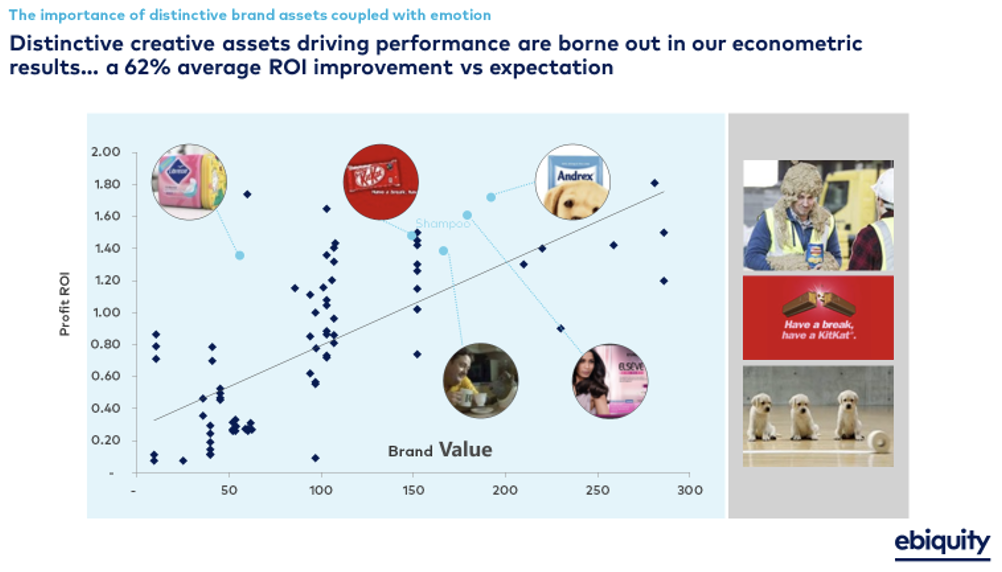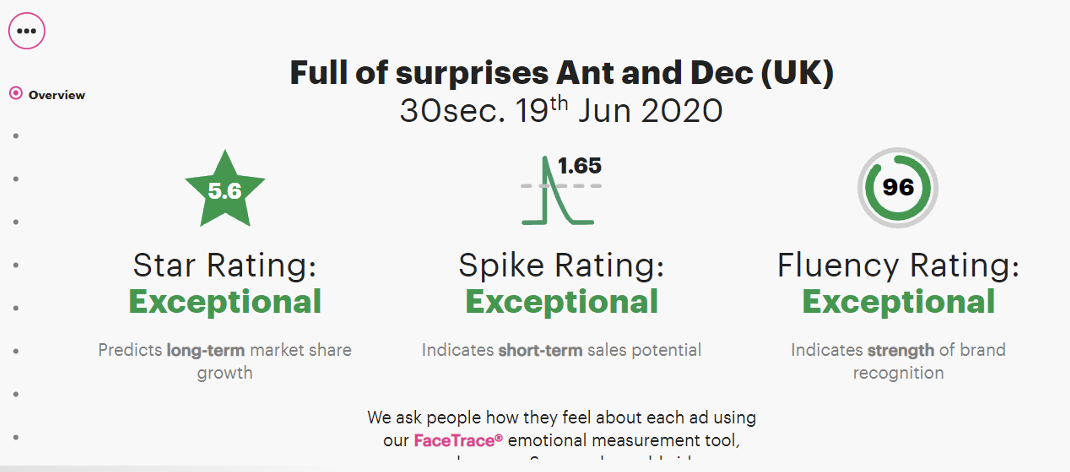Don’t forget the golden rules of trust and effectiveness

The role of ‘distinctive assets’ or ‘fluent devices’ is a critical foundation stone in improving the effectiveness of advertising, writes Ebiquity’s UK MD.
There has been significant debate this month regarding trust in advertising, with the majority view being that there is a significant level of distrust in advertisers and advertising.
It is true that ‘Joe Public’ or the ‘average person on the street’ may define advertising as being somewhat wider than those of us who work in the industry. Their definition of advertising may include the prevalent text scammers claiming to be the Post Office or a fraudulent message supposed to be from the Inland Revenue.
Research from Credos presented at the recent Trust Summit points to several negative slants including bombardment and suspicious advertising and the risk of exploitation of vulnerable groups.
At Ebiquity, we link advertising to efficiency and effectiveness. Clearly excessive frequency levels not only irritate consumers, but they are very bad for business, supressing ROI. Further, in the case of emails and text retargeting they can have the potential of increasing opt out rates for a company’s DM programme.
Problems with digital display advertising
The Credos research focused on ad bombardment. This is an area which should be high on the list of considerations when the industry looks to improve the perception of advertising.
It is in digital display where much of the problem lies. With increasingly complex targeting approaches deployed, the pool of users considered to fall into particular categories must logically get smaller, thereby meaning they will be served ads more often.
Similarly, retargeted buys based on search, often follow people around for weeks – often two or three times on the same page – after they have purchased the product. Frequency capping, or better management of it is one easy answer here.
Our work, Mind the Gap, has extended into display advertising and, using the Audience Project panel we have begun to look at display campaigns, on a line-by-line basis and at an aggregate level. This gives us new insights into both targeting of display campaigns and what levels of frequency are being delivered in aggregate, something which is not readily available or provided on plans.
Since the introduction of GDPR in 2018, it has become imperative that website publishers gain proper consent from consumers to collect their data and use it for advertising purposes. There are many consent frameworks, including the IAB’s Transparency & Consent Framework, that help publishers to explain the data they will collect, and what they will do with it, but it is still a difficult area to navigate.
With internet browsers (led by Apple’s Safari, and soon to be followed by Google’s Chrome) deprecating the use of third-party cookies, many brands are looking to improve their first-party data sets by attracting consumers to their websites, which makes it even more important to capture consent.
However, brands need to make sure that proper consent has been obtained for all data sets that they use throughout their advertising supply chain, including any third-party data that is used by their partners.
What the data tells us about ad performance
One of the most negative aspects of advertising is authenticity and trust. Consumers have to believe the claims of the advertisers for it to work.
The work from Ebiquity’s Marketing Effectiveness team would point to the fact that the most significant step change in advertising performance is through the creative, rather than the media channel on which it is aired.
There are several rules that always need to be remembered for the creative to work.
The role of ‘distinctive assets’ or ‘fluent devices’ is a critical foundation stone in improving the effectiveness of advertising. Ebiquity’s modelling teams have analysed and quantified the ROI of many ads from hundreds of brands and the impact of having these fluent devices coupled with positive emotion to link the advertising immediately to the brand is huge.
In the slide below, we can see the effect of this whereby strong distinctive assets create ‘overperformance’ of ROI given a brand’s size.

System1 scores this brand linkage element as their ‘fluency rating’. It is notable that when interrogating System 1 Ad testing results covering the Covid period sometimes the ‘rules of successful advertising’ were ignored.
If we consider the rules to be: “tell a believable story that is well branded using fluent devices, coupled with positive emotion”, then some brands did it extremely well.
Take, for instance, the Ant and Dec ad for Santander saying that the bank was doing virtual appointments (above).
The System1 metrics were extremely positive:

However, the ad at the bottom of System1 league table for Covid ads where the rules of good advertising were forgotten, and inauthentic ads were produced in the Covid period.
Many of the executions in the relegation zone were from US financial institutions, where there were no obvious fluent devices and there was overt ‘jumping on the bandwagon’ of the ‘we are all in it together, empathetic and inauthentic Covid advertising movement.
Some of the worst culprits were from JPMorgan Chase and Co ‘The other side’ and ‘A better Principle’ from the NASDAQ.
One of the big themes currently is ‘purpose-led’ advertising. Inauthentic ‘purpose-led’ advertising will, by default, engender distrust.
While there are great examples quoted such as Lifebouy in India, highlighting hygiene and Lifebouy’s anti-bac attributes during the Covid era. Likewise, the Co-op’s collaboration with Marcus Rashford highlighting the importance of community is a brand getting it right.
Topping the league table for getting it wrong and winning the gong for the most inauthentic ad that will likely generate the highest levels of distrust in advertising, is the US Pepsi execution starring Kendall Jenner when she calms a highly policed demonstration by handing a police officer a Pepsi can:
Unbelievable? Yes.
Inauthentic? Yes.
Missing the key golden rules of successful advertising? Yes.
And finally, likely to engender advertising distrust? Yes.
Nick Pugh is MD UK & Ireland of Ebiquity




